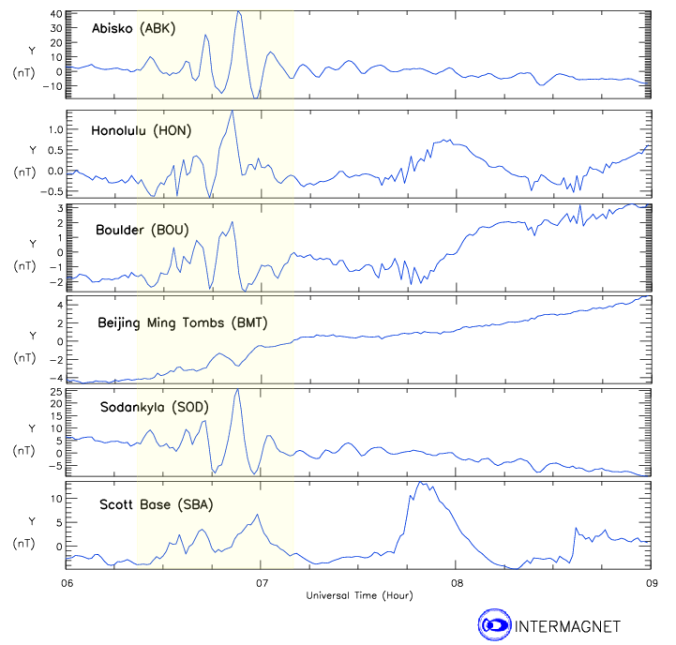June 30, 2020: Comet NEOWISE (C/2020 F3) is passing by the sun this week–and it’s looking good. The comet just experienced a sharp increase in brightness recorded by coronagraphs onboard the Solar and Heliospheric Observatory (SOHO). Click to play a 4-day movie of the surge:
“During the transit, Comet NEOWISE increased in brightness from magnitude +4 to +1.8–an almost 8-fold jump,” says planetary scientist Qicheng Zhang of Caltech, who analyzed the images. “If the comet maintains this brightness, it will be visible to the naked eye when it emerges from the sun’s glare in July.”
Zhang is a bit concerned, however, that the rapid brightening might be too much of a good thing. “When a comet brightens this quickly (2.2 magnitudes in only ~4 days) it could be a sign that the nucleus is unstable. Comet NEOWISE might yet disintegrate,” he cautions.
Among astronomers, this is a bit of a sore point. Earlier this year two comets, ATLAS (C/2019 Y4) and SWAN (C/2020 F8), approached the sun with much fanfare, then disintegrated before they could become naked-eye objects. Disappointing.

The disintegration of Comet ATLAS when it passed by the sun at a similar distance in April 2020. Credit: Hubble Space Telescope. [More]
“I don’t think so,” says Karl Battams of the Naval Research Lab in Washington DC. “Comet NEOWISE looks healthy to me. It showed a smooth-and-steady brightness increase, perhaps a little steeper than we might like, but nothing that makes me enormously concerned for its health, as long as it has a reasonably large nucleus.”
We’ll soon find out. “Later this week, around perihelion (closest approach to the sun) the comet may be observable by skilled astronomers low in the morning twilight,” says Zhang. “If it maintains anything close to its brightness as it left SOHO’s field of view, it will most likely be recovered from the ground by then.”
Any sightings this week could be very good news, indeed. As July unfolds, the comet will swing around the sun and pop up in the evening sky–perfectly placed for casual sky watchers if anything remains to be seen. Stay tuned for updates.











